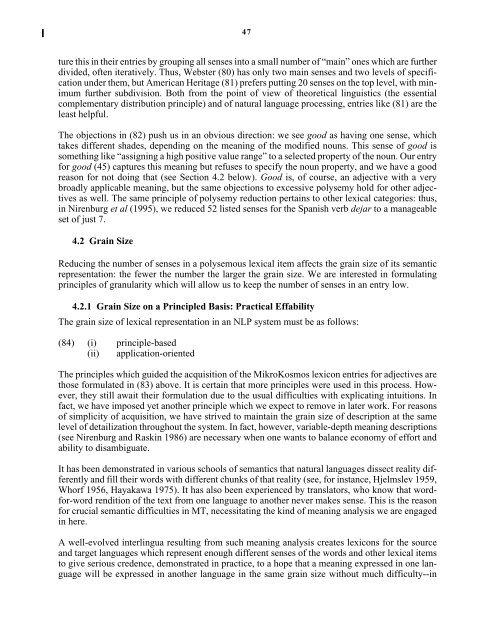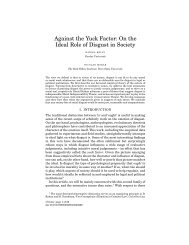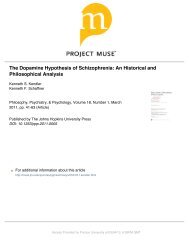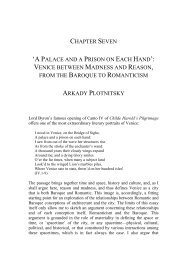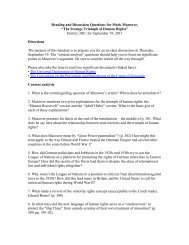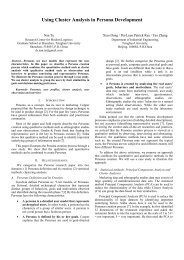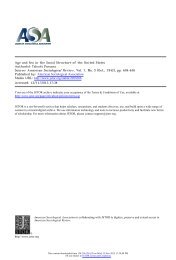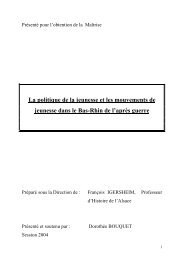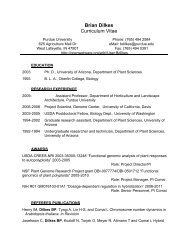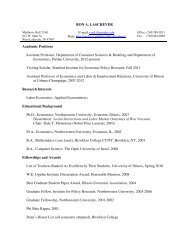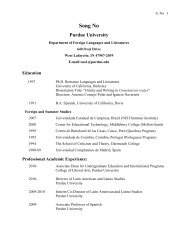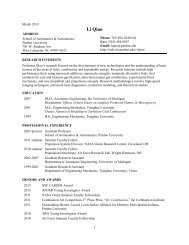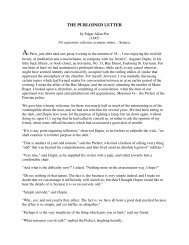Lexical Semantics of Adjectives - CiteSeerX
Lexical Semantics of Adjectives - CiteSeerX
Lexical Semantics of Adjectives - CiteSeerX
You also want an ePaper? Increase the reach of your titles
YUMPU automatically turns print PDFs into web optimized ePapers that Google loves.
47<br />
ture this in their entries by grouping all senses into a small number <strong>of</strong> “main” ones which are further<br />
divided, <strong>of</strong>ten iteratively. Thus, Webster (80) has only two main senses and two levels <strong>of</strong> specification<br />
under them, but American Heritage (81) prefers putting 20 senses on the top level, with minimum<br />
further subdivision. Both from the point <strong>of</strong> view <strong>of</strong> theoretical linguistics (the essential<br />
complementary distribution principle) and <strong>of</strong> natural language processing, entries like (81) are the<br />
least helpful.<br />
The objections in (82) push us in an obvious direction: we see good as having one sense, which<br />
takes different shades, depending on the meaning <strong>of</strong> the modified nouns. This sense <strong>of</strong> good is<br />
something like “assigning a high positive value range” to a selected property <strong>of</strong> the noun. Our entry<br />
for good (45) captures this meaning but refuses to specify the noun property, and we have a good<br />
reason for not doing that (see Section 4.2 below). Good is, <strong>of</strong> course, an adjective with a very<br />
broadly applicable meaning, but the same objections to excessive polysemy hold for other adjectives<br />
as well. The same principle <strong>of</strong> polysemy reduction pertains to other lexical categories: thus,<br />
in Nirenburg et al (1995), we reduced 52 listed senses for the Spanish verb dejar to a manageable<br />
set <strong>of</strong> just 7.<br />
4.2 Grain Size<br />
Reducing the number <strong>of</strong> senses in a polysemous lexical item affects the grain size <strong>of</strong> its semantic<br />
representation: the fewer the number the larger the grain size. We are interested in formulating<br />
principles <strong>of</strong> granularity which will allow us to keep the number <strong>of</strong> senses in an entry low.<br />
4.2.1 Grain Size on a Principled Basis: Practical Effability<br />
The grain size <strong>of</strong> lexical representation in an NLP system must be as follows:<br />
(84) (i) principle-based<br />
(ii) application-oriented<br />
The principles which guided the acquisition <strong>of</strong> the MikroKosmos lexicon entries for adjectives are<br />
those formulated in (83) above. It is certain that more principles were used in this process. However,<br />
they still await their formulation due to the usual difficulties with explicating intuitions. In<br />
fact, we have imposed yet another principle which we expect to remove in later work. For reasons<br />
<strong>of</strong> simplicity <strong>of</strong> acquisition, we have strived to maintain the grain size <strong>of</strong> description at the same<br />
level <strong>of</strong> detailization throughout the system. In fact, however, variable-depth meaning descriptions<br />
(see Nirenburg and Raskin 1986) are necessary when one wants to balance economy <strong>of</strong> effort and<br />
ability to disambiguate.<br />
It has been demonstrated in various schools <strong>of</strong> semantics that natural languages dissect reality differently<br />
and fill their words with different chunks <strong>of</strong> that reality (see, for instance, Hjelmslev 1959,<br />
Whorf 1956, Hayakawa 1975). It has also been experienced by translators, who know that wordfor-word<br />
rendition <strong>of</strong> the text from one language to another never makes sense. This is the reason<br />
for crucial semantic difficulties in MT, necessitating the kind <strong>of</strong> meaning analysis we are engaged<br />
in here.<br />
A well-evolved interlingua resulting from such meaning analysis creates lexicons for the source<br />
and target languages which represent enough different senses <strong>of</strong> the words and other lexical items<br />
to give serious credence, demonstrated in practice, to a hope that a meaning expressed in one language<br />
will be expressed in another language in the same grain size without much difficulty--in


